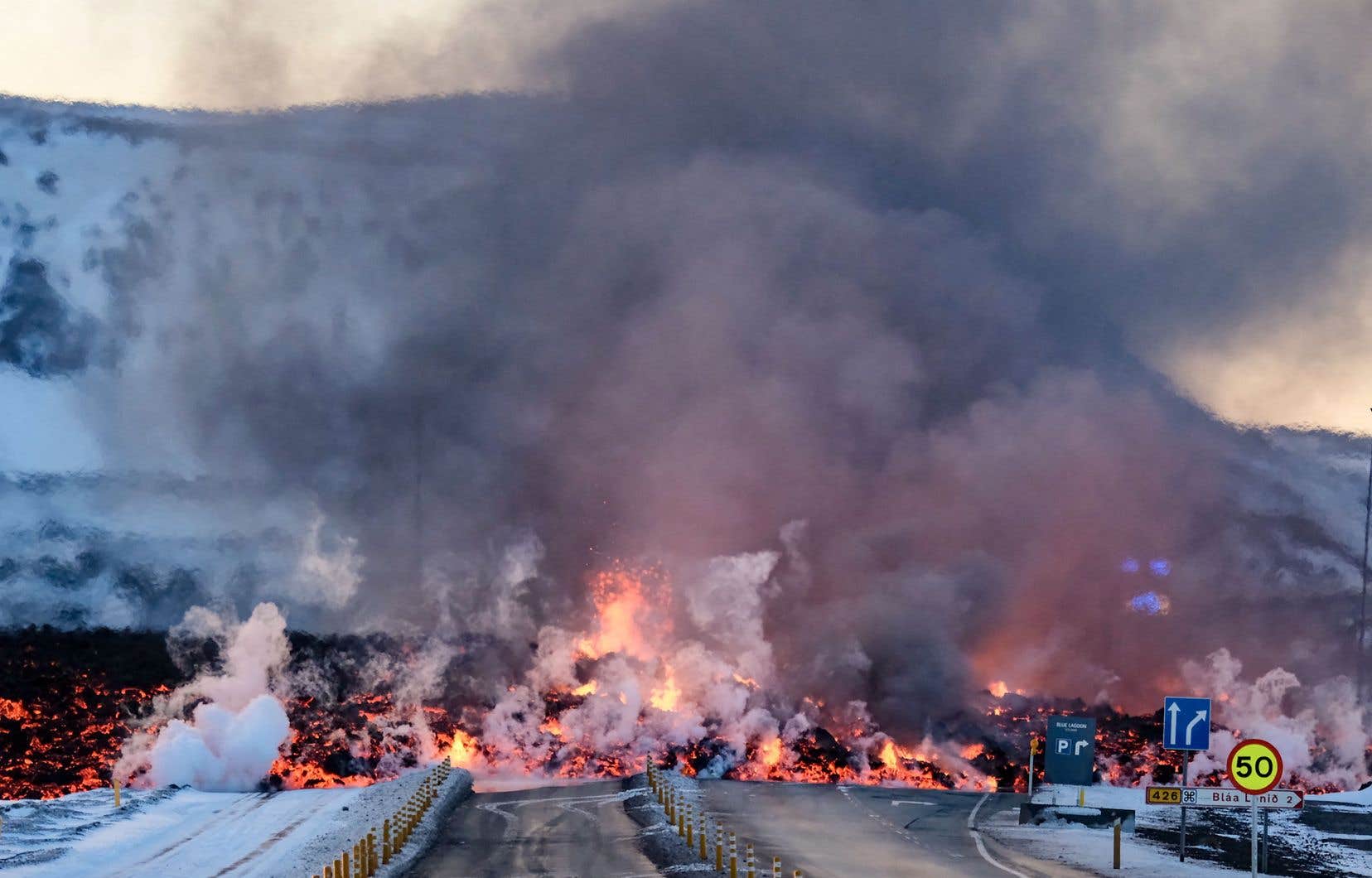A new volcanic eruption affects the Reykjanes peninsula, in southwest Iceland, on Thursday, the third since December 18, the alert level having been raised due to the risk of rupture of a major pipeline. ‘water.
Since early Thursday morning, orange-red lava flows accompanied by a cloud of smoke have risen from a fissure approximately 3 km long, visible from the capital Reykjavik.
Civil Protection declared a state of emergency early in the afternoon after the lava flow covered and exploded a pipeline supplying hot water to the Reykjanes peninsula.
“The hot water pipe is broken, causing a shortage of hot water in Sudurnes. It is important that residents and businesses in Sudurnes save electricity and hot water,” Civil Protection said in a press release.
Some 28,000 people live in this region, located in the south of the peninsula, one of the most populated in Iceland, and whose electricity and water supply comes from the Svartsengi geothermal power plant.
“We are working on the next steps to ensure that people receive hot water,” Civil Protection spokesperson Hjördis Gudmundsdóttir previously told AFP.
According to the authorities, the hot water supply in this region now relies solely on water stored in reservoirs. These tanks usually last three to six hours, possibly six to 12 hours in the event of cost-saving measures.
The eruption occurred about 40 km southwest of Reykjavik, in the same area as the previous ones that occurred on December 18 and January 14 near the town of Grindavik, whose 4,000 inhabitants were evacuated on November 11.
“At 5:30 a.m. (12:30 a.m. in Quebec) this morning, a small earthquake began to intensify northeast of Sýlingarfell. About 30 minutes later, an eruption started in the same area,” said the Icelandic Meteorological Office (IMO), which had been expecting an imminent eruption in recent days.
At the start of the morning, the lava jets reached a height of around 50 to 80 m and the plume rose to a height of around 3 km, the office continues.
This is the sixth volcanic eruption in Iceland in almost three years, the previous one having taken place in the early morning of January 14 already near Grindavik.
Protective dikes
This volcanic eruption is taking place about 5 km north of Grindavik, a town of nearly 4,000 inhabitants evacuated in November, said the spokesperson for Icelandic Civil Protection.
The Svartsengi power plant was previously evacuated and has been operating remotely since the December 18 eruption. Dikes were built to protect it.
They “are 8 to 10 meters high and are made of earth. They surround the entire power plant,” explained Ms. Gudmundsdóttir.
For their part, guests of the Blue Lagoon geothermal spa, a popular tourist destination, were safely evacuated, its management told Ruv.
“The situation is under control, there is no danger. The airport is safe. People are 100% safe,” reassured the spokesperson for Icelandic civil protection.
Until the March 2021 eruption, the Reykjanes Peninsula, south of the capital Reykjavik, had been spared from eruptions for eight centuries.
There have been five others since, in August 2022 and July 2023, December 18, 2023, January 14 and this Thursday, a sign, for volcanologists, of a resumption of volcanic activity in the region.
The small town of Grindavik was damaged in November by a series of eruption-precursor earthquakes that opened large cracks in the ground and on some buildings. During the eruption of January 14, three houses were burned by lava, something unprecedented in 51 years in the country.
Thirty-three volcanic systems are considered active in this country of fire and ice, the most volcanic region in Europe.
